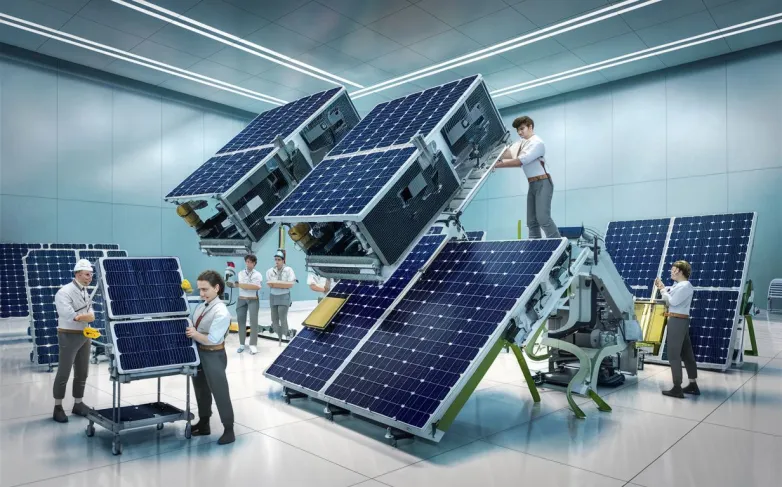Revolutionary Method Re-Manufactures Perovskite Solar Cells
- Revolutionary method re-manufactures perovskite solar cells with 88% efficiency. Reduce environmental impact by reusing and recycling components, cutting CO2 emissions by up to 53%.

Researchers from various institutions have developed a method to re-manufacture fully encapsulated perovskite solar cells, achieving 88% of their original efficiency. The process involves using carbon-based electrodes and re-using, recycling, repairing, or replacing parts to create a new product. The team identified materials with high environmental impacts in the module, such as FTO front electrodes, titanium dioxide layers, zirconium dioxide, and carbon-based back electrodes.
The researchers found that re-using or recycling glass components could reduce the global warming potential of perovskite solar modules by up to 53%. By removing and reusing certain components, such as metal oxide layers, the team was able to maintain 88% of the original efficiency after the re-manufacturing process. The re-manufactured systems could potentially have a lower CO2 footprint than traditional c-Si modules after a certain number of years.
How can re-manufacturing perovskite solar cells reduce environmental impact?
- Re-manufacturing perovskite solar cells can reduce environmental impact by re-using or recycling glass components, which can reduce the global warming potential of the modules by up to 53%.
- By removing and reusing certain components, such as metal oxide layers, researchers were able to maintain 88% of the original efficiency after the re-manufacturing process.
- The process of re-manufacturing perovskite solar cells involves using carbon-based electrodes and re-using, recycling, repairing, or replacing parts to create a new product, which can help reduce the environmental impact of manufacturing new cells.
- Identifying materials with high environmental impacts in the module, such as FTO front electrodes, titanium dioxide layers, zirconium dioxide, and carbon-based back electrodes, allows researchers to focus on finding more sustainable alternatives or methods for these components.
Also read
- Heliene, Premier Energies Partner for US Solar Cell Production
- Breakthrough: Stable High-Efficiency Perovskite/Silicon Tandem Solar Cells
- Enhancing PLED Performance Through Interfacial Fracture Study
- Enhancing Perovskite Thin-Film Interfaces for Solar Cells
- Waaree Energies Recognized in RETC PV Module Index
